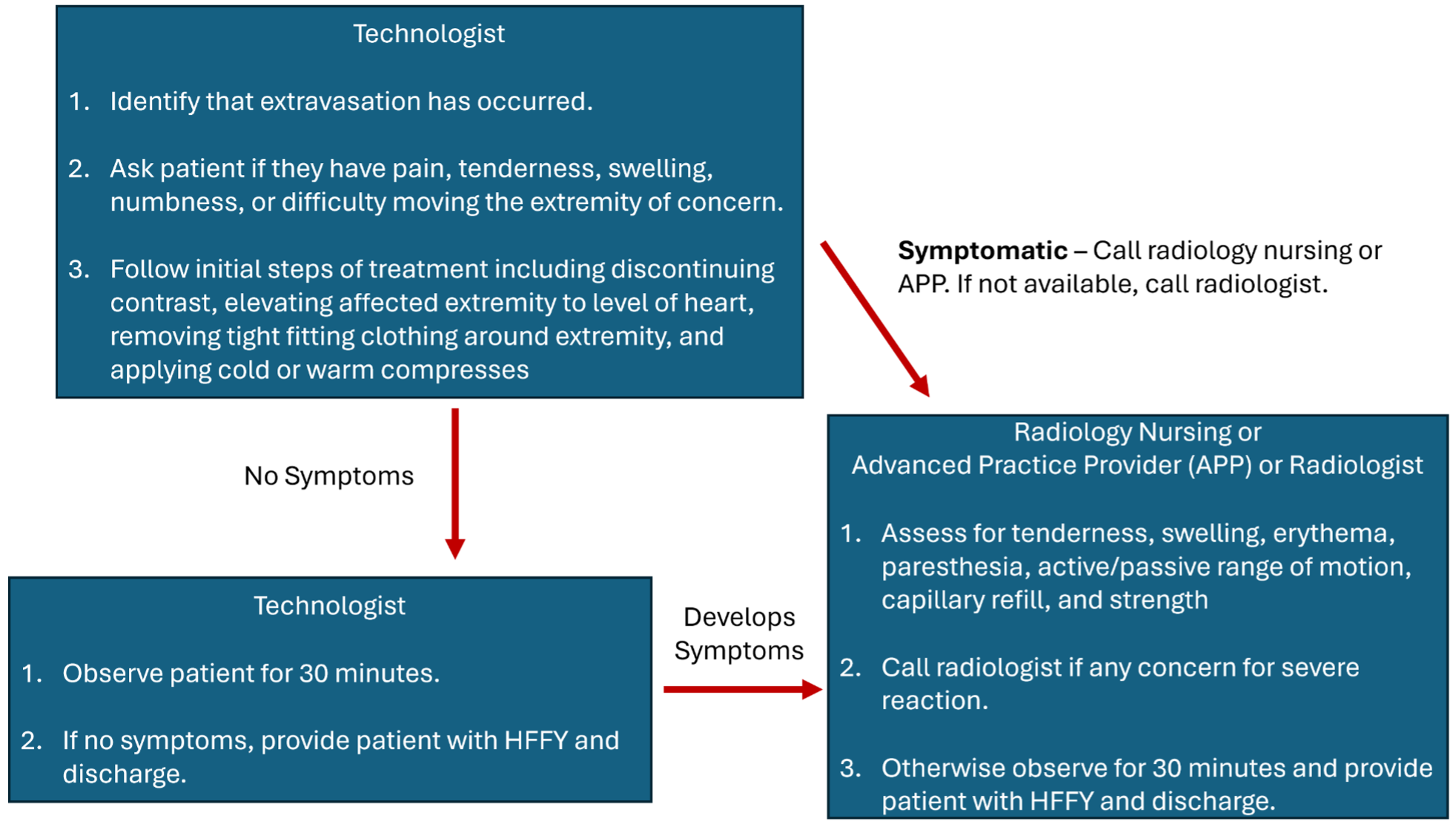Contrast Reactions and Pre-Medication – Giuseppe V. Toia, MD, MS
Contrast Reactions and Pre-Medication
Contrast Reactions and Pre-Medication
Lecure on managing contrast reactions.
description of contrast media control systems to assure compliance with JCAHO standards
File: uwhc-contrast-media-control-systems.pdfInstructions and link to exam on uwhealth.org
File: contrast-reaction-test-instructions.pdfExtensive tutorial on contrast agents
File: contrast-agents-tutorial.pdfDrug selection chart for adult patients
File: contrast-rx-dosage-adult.pdfmedication and dosage charts for pediatric patients
File: contrast-rx-dosage-peds.pdfRevised 6/9/2025
Contrast extravasation, also known as contrast infiltration, refers to the unintentional leakage of intravenously injected contrast media from a vein into the surrounding soft tissues. It is a rare phenomenon happening in 0.1 – 1.2% (1/1000 – 1/83) of all CT contrast injections. Extravasations with gadolinium-based contrast media are much less common than those seen after injection with iodinated contrast media but can happen.
Most contrast extravasations resolve without complications. Severe extravasation events are extremely rare happening in <<1% of all extravasations. Severe extravasations can induce compartment syndrome, a painful condition caused by a build-up of pressure in a closed muscle or tissue compartment, potentially restricting blood flow and leading to tissue necrosis, and nerve damage. Other severe reaction sequelae include skin blistering and necrosis. While it was initially hypothesized that larger volumes of extravasated contrast were more likely to cause compartment syndrome, there have been studies showing that small volumes can also cause it, particularly when it happens in less capacious volumes of tissues, such as the wrist or foot. Low- and iso-osmolar contrast agents (e.g., iohexol and iodixanol, respectively) have an even lower chance of causing a severe extravasation event as compared to older high-osmolar agents (e.g., diatrizoate) which are no longer used intravenously.
Extravasations are more common in patients who cannot communicate effectively (e.g., infants, patients with altered consciousness), are severely ill or debilitated, have altered circulation in the injected extremity (e.g., lymphedema, phlebitis, acute trauma), had radiation to an injected extremity, or are injected in the hand, foot, or ankle.
Power injected contrast via flow-rate approved central lines and PICCs also vastly decreases the incidence of extravasations.
In most patients, initial swelling and tenderness resolve within hours to days after extravasation. Most patients recover without any clinically significant sequelae. If a contrast extravasation happens, use these guidelines (regardless of contrast agent):
An imaging technologist is the first health care provider likely to recognize a contrast extravasation.
If patient does not indicate any pain or discomfort on initial assessment: Technologists observe patient for at least 30 minutes. If patient does not have worsening symptoms, patient can be discharged using the discharge protocol below.
If patient appears acutely symptomatic on initial survey or patient develops worsening symptoms after 5 minutes of observation/treatment or the technologist feels unsure of their assessment (e.g., patient mental status altered and unable to convey symptoms): Technologist should call a radiology nurse or advanced practice practitioner to assess the patient. The technologist should readily convey any clinical information they have gathered once additional health-care providers arrive. If a nurse or APP is also concerned for compartment syndrome, the radiologist should be notified to assess the patient.
If a nurse or APP is unavailable, a radiologist (attending or trainee) should assess the patient.
We stress that compartment syndrome almost always takes time to develop, on the order of hours to days.

Interventional Radiology Bicarb Protocol for CIN
Contrast induced or associated AKI is felt to be a real albeit rare entity. The most important risk factor seems to be pre-existing severe renal insufficiency (AKI or eGFR<30mL/min/1.73m2. The major preventative action to mitigate the risk of CIN is to provide intravenous volume expansion (see Hydration protocol). One possible protocol would be 0.9% saline at 100 ml/hr, beginning 6-12 hrs before contrast and continuing for 4-12 hours after contrast in the inpatient setting.
A study from JAMA printed in May of 2004 indicates that hydration with a bicarbonate solution may better prevent contrast induced nephropathy than NS hydration. Most renal failure is associated with metabolic acidosis and low urinary pH. NS may contribute to acidosis while the bicarbonate solution will buffer the pH.3. Subsequent studies have challenged this practice, and results are not definitive at this time. However, given the low cost and lack of side effects, it is unlikely to be harmful and could be added to the hydration regimen. Other practices, such as administration of N-acetyl cysteine, are not supported by the literature. Cessation of nephrotoxic medications may also be helpful when feasible.
Solution: 150 mEq NaHCO3 in 1000cc D5W
1 hour prior to contrast: Initial IV bolus – 3ml/kg/hour x 1 hour
After 1 hour bolus: 1ml/kg/hour during contrast exposure and 6 hours post contrast.
.
Purpose: reduce the number of patients with known allergies scanned at East Clinic, Digestive Health Center, and other non-hospital outpatient centers.